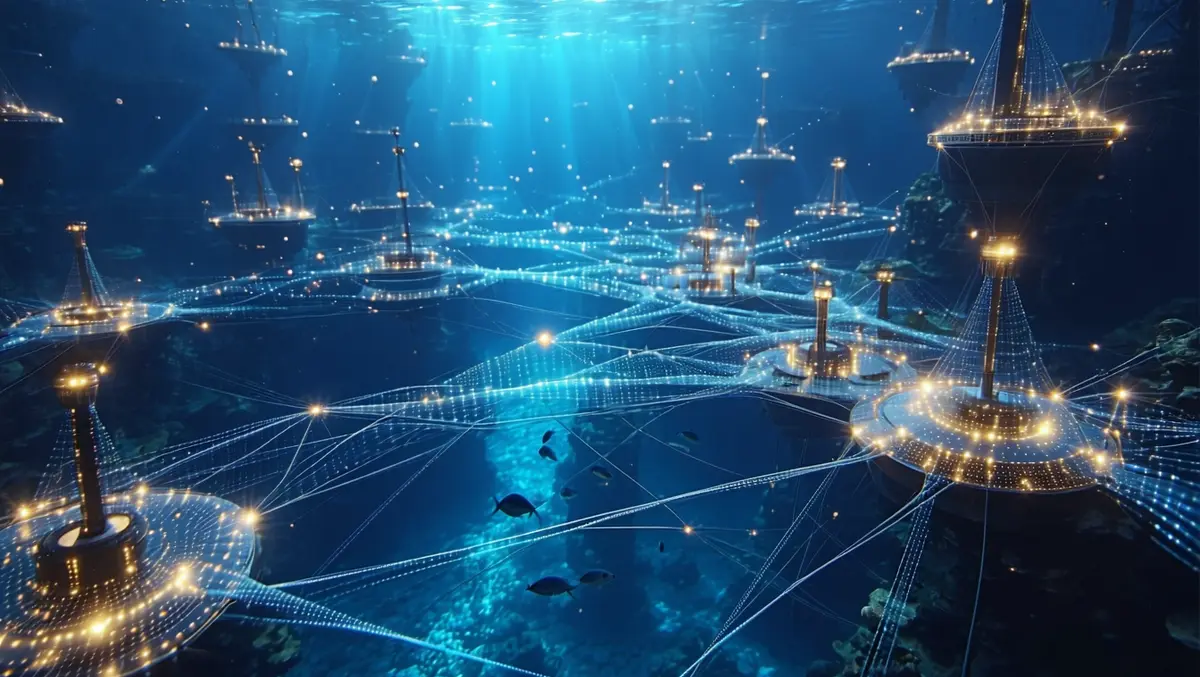
Telstra plans AI-driven network transformation by 2030
Telstra International has announced a new strategy to enhance its international network, focusing on creating a highly autonomous, zero-touch network that is intended to improve customer experiences.
The network upgrade will involve the enhancement of subsea cable infrastructure to over 800 Tbps of total lit capacity. This expansion is aimed at addressing the growing needs for bandwidth and supporting data centre demands and the growth in global backbone networks, increasingly driven by cloud and AI applications. Key global routes that will benefit from these upgrades include intra-Asia, Transpacific, and Asia to Australia.
The network enhancements will employ advanced optical technology from both Infinera and Ciena. Telstra International plans to utilise Infinera's solution to cloudify its infrastructure. This decoupling of software and hardware will allow for increased subsea and backhaul capacity, offering greater flexibility and forming a foundation for a more autonomous network.
"With the scale of our subsea network in the Pacific, this move will better position us to ensure the stability of the world's digital connectivity, and support the future growth of local economies," said Roary Stasko, CEO Telstra International.
Infinera has expressed its enthusiasm for the partnership. "As network operators look to upgrade their networks to meet rapidly increasing customer bandwidth demands, flexible compact modular solutions like Infinera's GX platform play a critical role in delivering scalable, high-performance, and cost-effective optical transport solutions for subsea networks, while also supporting multiple generations of embedded optical engines," said Nick Walden, Senior Vice President, Worldwide Sales at Infinera.
"We are excited to partner with Telstra to upgrade and modernize its network, enabling them to increase capacity and offer a new kind of network with predictive capabilities and powered by AI."
The move towards a highly autonomous network is part of Telstra International's broader vision, which involves the implementation of modern technology such as AI, machine learning, and cognitive computing to enable the network to configure, monitor, and maintain itself autonomously. Foundational milestones include the simplification of network architecture, removal of legacy platforms, and the introduction of next-generation inventory and management systems via Ciena's Blue Planet.
Joe Cumello, Senior Vice President and General Manager, Blue Planet, a division of Ciena, stated, "Telstra International is making significant strides toward a highly autonomous and adaptive network, and Blue Planet will support this transformation by providing intelligent automation for its multi-vendor network and services. This collaboration is helping Telstra accelerate its journey towards AI-driven operations, improving both service delivery and customer experiences."
Commenting on the future vision, Stasko noted, "Our vision represents a fundamental shift in how we manage and operate our international network. By focusing on intent-driven outcomes, we are paving the way for a more resilient, efficient, and customer-centric network.
He further elaborated, "We expect to see traffic grow at a much faster rate, at least three times by 2030, with the development of AI which drives the need for more capacity and a network that covers vast areas of society. In order to deliver this, we need a step change. We are transforming our network at all layers and innovating with strategic partners to apply the principles of virtualised and cloud technologies to the network."
A key component of the network vision includes the enhancement of data and inventory management through the development of a digital twin of Telstra International's network infrastructure. This digital twin is designed to act as a virtual replica, facilitating real-time monitoring, simulation, and optimisation of network operations. By leveraging AI, ML, and cognitive computing, the digital twin will offer deeper insights into network performance.
Stasko outlined, "By 2030 we will have built a highly autonomous network able to detect underutilised routes and turn capacity up or down or respond to changes or detect vulnerabilities such as temperature levels and move traffic off those to avoid outages. AI and ML give us the opportunity to strengthen our network defence. Underpinning this technology is our people who develop the models and patterns that drive AI and ML."


